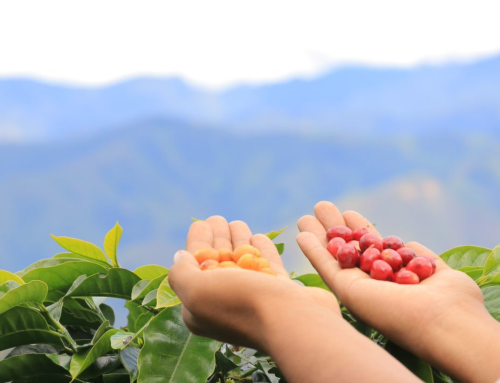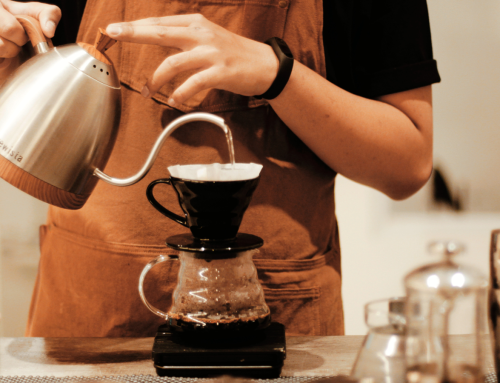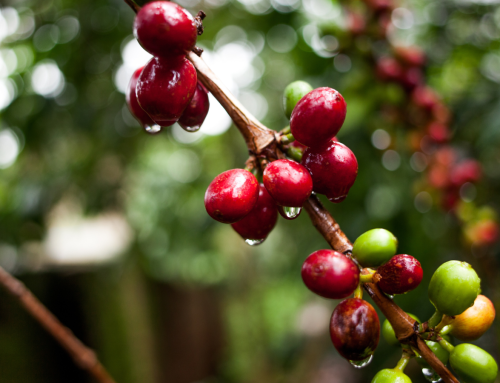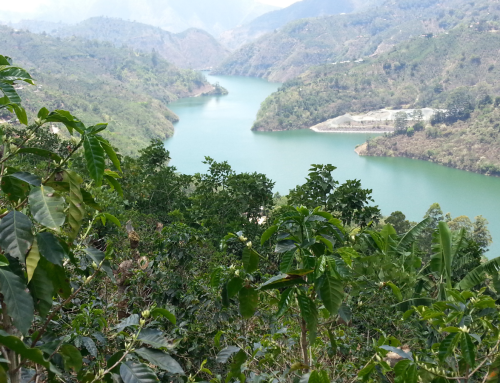Riley Thomson, head of the Volcafe Way program in Costa Rica, spoke recently with Victor Hugo Sanchez Fonseca, a coffee producer in Perez Zeledon, about how coffee growing has changed and why he joined the Volcafe Way program.
Good afternoon, Don Victor Hugo. What is the size of your farm?
Good afternoon, the size of the farm is 4.5 hectares. I currently have coffee growing on 3.5 hectares, and the remaining area is dedicated to the conservation of our water resources and roads.
What varieties of coffee do you grow?
We have several varieties, including Obata, 1962—a locally developed Sarchimor that’s also known as Pecho de Burro— and Costa Rica 95.
How many years have you been producing coffee?
For more than 30 years.

Coffee producer Victor Hugo Sanchez Fonseca runs a Volcafe Way model-business farm in Perez Zeledon, Costa Rica.
How did you start as a coffee producer?
I inherited the land from my parents, who used to grow coffee as well.
Do you think the coffee business has changed much since their time?
I think it has changed, because back then there weren’t as many pests and diseases as we have now. Before, it was much easier to grow coffee. It required less fertilizer and other inputs.
And what about the market and industry? Have those changed as well?
Prices were better. Back then coffee farmers could afford better lifestyles.
Have these changes affected your business?
Of course. New varieties [of coffee] have been introduced, and some of them have caused more loss instead of improvements. Some of them, like the Venecia variety, were supposed to be resistant to leaf rust, for example, and have turned out to be completely susceptible to the disease, causing the complete loss of plantations. I planted 2 hectares of this variety only three years ago and have already needed to renovate the entire plot.
What have been the changes in terms production costs, such as inputs, labor, transport, etc., and coffee prices? How have these affected your business?
Nowadays we have to pay our workers way more than before, and inputs are much more expensive. We can hardly recover our investments. Farmers must fumigate regularly and apply lots of fertilizer. If not, the coffee doesn’t produce at all.
What convinced you to become a Volcafe Way business-model farmer?
I accepted to be model farmer because I was interested in receiving technical support and to learn of new varieties to help me get through the crisis we are currently living.
What have been the most useful recommendations you have received through the Volcafe Way?
I began renovating my plantation with new varieties of coffee and also increased the distance between rows. We traditionally planted our coffee with very little space between rows. We are now re-learning everything about renovation, such as making nurseries, contour planting and giving the plants the distance between each other they need to grow according to the variety.

Young coffee trees — well spaced, and with complementary shade trees — on Finca La Flor.
How do farmers in this region share knowledge and information?
Recently we have been invited by Volcafe to trainings that take place in our communities. These have taught us a great deal about coffee farming and taking care of our workers.
Aside from these training events, how do you share information and experiences about coffee with other famers in the region? Is knowledge being share, or does each farmer manage his crop in his/ her own way?
Since my farm became a model and we began implementing the different practices, many other famers have come to observe and learn from my experience. I have also had the opportunity to visit other model farmers in the region to learn about shade management—another aspect [that is new to me]. We now share knowledge about all these different practices.
Do you think it is better to stick to the traditional way of coffee farming or to be more open to change and the sharing of experiences?
There is always something new to learn. I cannot compare my farm to another, however, because the conditions can be very different. I believe that it is always better to share because there is always room to improve and one must lever stop learning.






